The views expressed in our content reflect individual perspectives and do not represent the authoritative views of the Baha'i Faith.
No one saves us but ourselves. No one can and no one may. We ourselves must walk the path. – Gautama Buddha
Every seeker asks: who maps the growth of the heart, the search for the inner self, the seeker’s path? Who charts the roads of the soul?
In this age of science, we can delineate the growth of the physical body at every stage. Educators can help our minds grasp new concepts. Psychologists and philosophers can trace the general outlines of our mental and moral development. But who can we trust to outline a course and map a destination for our souls? For spiritual seekers, wouldn’t it be helpful to have an actual map? If we could follow the turn-by-turn directions or a well-marked set of signs, and see and understand those spiritual pathways that lead to enlightenment, serenity and conscious awareness, couldn’t we start to discern and understand our eventual destination?
These questions, as you might imagine, aren’t new. Even the ancients asked them. Throughout the entire period of our recorded human history a number of maps of the seeker’s spiritual journey have emerged. The guides who drew these maps had deep levels of insight and sensitivity, transcending this human existence with a profound connection to something higher in the realm of being. In every age, the philosophers, poets and prophets who bring us our maps serve as cartographers of the human spirit.

It seems like many of these maps of our spiritual journeys emerge from profound life experiences—from the school of hard knocks. After all, the messengers who made the best maps all suffered. People who took life-changing inner journeys have left us detailed records of their own transformations. The great poets and artists have looked deeply into human experience and beautifully recorded its pain and joy. Philosophers and wise men and holy women and shamans have all delineated spiritual ways of being.
The prophets, the great spiritual teachers, those holy founders of the world’s major spiritual traditions, have laid down the most-traveled maps, the definitive seeker’s paths, the guides for the majority of the planet’s people and their journeys.
So, in this proliferation of maps, which one do you follow?
What a tough choice! We have access to a huge number of available approaches, from Abraham to Zen, from Aurobindo to Zeus, from every form of psychoanalysis to Transcendental Meditation, not to mention the various versions of new age spirituality and the guidance of any number of gurus, mystics and teachers. Such a multiplicity of potential methods, for anyone serious about looking into all the various ways of seeking spiritual maturity, can be overwhelming. To make it even more difficult, many of these differing schools of thought seem to contradict one another. Finally, the schisms and splits and sects within many of the major religious teachings contravene their claims of exclusivity and correctness, with so many claiming they have an absolute monopoly on the truth.
However—if you could somehow plot the general roadmap of each of these teachings, and you compared all of them, wouldn’t they all tend to go in a similar direction? Wouldn’t each of them, from whatever point of the compass they originated, approach the same destination? Don’t they all attempt to reach for truth, which, by its very nature, constitutes one thing instead of a multiplicity of things?
So doesn’t it seem fundamentally right, somehow just basically rational and sensible, that all insightful and profound spiritual teachings have a great deal in common? Huston Smith, one of the world’s most learned scholars of comparative religion, put it this way: “If we take the world’s enduring religions at their best, we discover the distilled wisdom of the human race.”
Many people who studied, researched and walked these paths have attempted to build a synthesis of humanity’s major spiritual teachings and wisdom traditions. Most have agreed that the various maps of spiritual search tend to go in the same general direction: toward increasing maturation and, like a healthy plant, toward the life-giving source of the light.
Every real spiritual path, after all, seeks spiritual enlightenment and growth. All true paths search for greater understanding, for greater love, for greater meaning. Every one of these spiritual journeys moves its travelers up through expanding levels of inner development toward heightened awareness, growing wisdom, increased maturity, a higher consciousness and a transcendent, transformative soul.
All of the wisdom and purpose these great teachers and messengers offer us, the Baha’i writings say, means to move our souls “From degree to degree of progressive unfoldment:”
… man is in need of divine education and inspiration; the spirit and bounties of God are essential to his development. That is to say, the teachings of Christ and the prophets are necessary for his education and guidance. Why? Because they are the divine gardeners who till the earth of human hearts and minds. They educate man, uproot the weeds, burn the thorns and remodel the waste places into gardens and orchards where fruitful trees grow. The wisdom and purpose of their training is that man must pass from degree to degree of progressive unfoldment until perfection is attained. For instance, if a man should live his entire life in one city, he cannot gain a knowledge of the whole world. To become perfectly informed he must visit other cities, see the mountains and valleys, cross the rivers and traverse the plains. In other words, without progressive and universal education, perfection will not be attained. – Abdu’l-Baha, Foundations of World Unity, p. 77.
In the next essay in this series, let’s consider those progressive stages of the soul.
You May Also Like
Comments







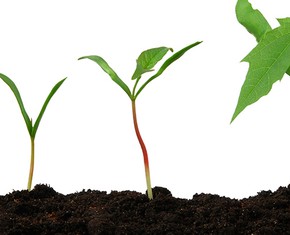
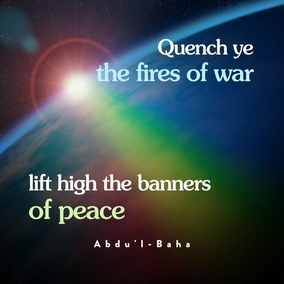
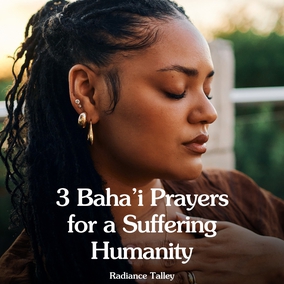
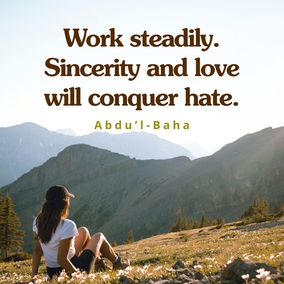
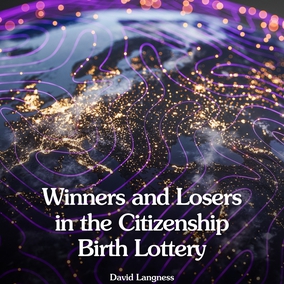
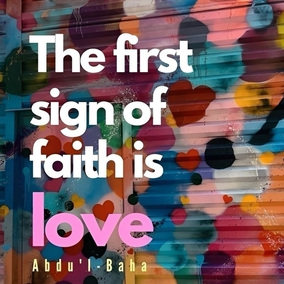
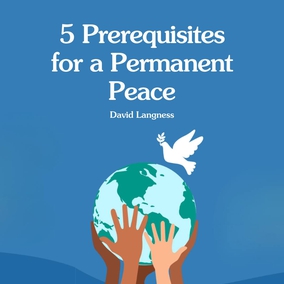

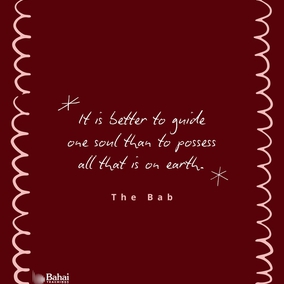

map, but if we're provided a detailed formula, we can come to expect or
demand formulae for everything and
lose our healthy insecurity. That can
make us stop striving, or can train our mind more than our heart. I am
glad the Baha'i scriptures encourage
us to cultivate both in synergy!